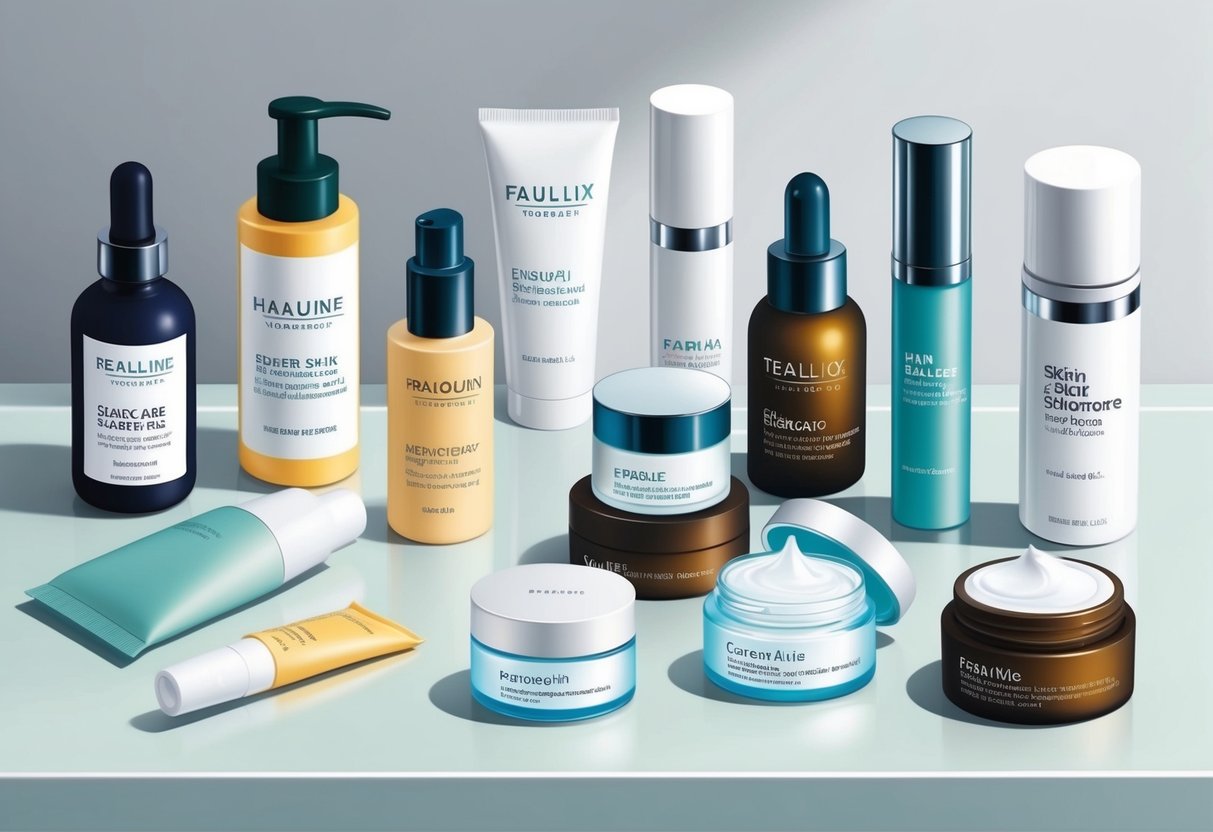How to Build an Effective Skincare Routine for Every Skin Type
Choosing a Mask for Your Skin Type
Selecting the correct face mask requires understanding your skin’s unique needs. Oily and acne-prone skin responds well to clay or charcoal masks that manage shine and absorb impurities.
Dry skin needs moisture-boosting masks with ingredients like squalane, honey, or ceramides. Sensitive skin types should look for fragrance-free, soothing masks containing ingredients such as aloe vera or centella asiatica.
Combination skin may benefit from multi-masking—applying different products to target specific facial zones. Those struggling with dullness or uneven texture might find gentle exfoliating or brightening masks most effective.
Reading product labels and assessing ingredient lists helps avoid potential allergens and irritants. Testing a new mask on a small patch of skin before full application is always recommended for safety.
Users can find more tips for selecting the right products by consulting guides on building a skincare routine.
Addressing Fine Lines, Dark Spots, and Puffiness
Targeted skincare products aim to treat specific concerns such as fine lines, dark spots, and puffiness. Masks containing antioxidants like vitamin C or niacinamide can help fade dark spots and improve skin tone.
Ingredients such as peptides and retinol are commonly used in masks or serums to reduce the appearance of fine lines and encourage collagen production. For puffiness, especially around the eyes, cooling gel masks or products with caffeine and green tea extract provide a tightening and soothing effect.
Applying these targeted treatments regularly as part of a balanced skincare routine helps address visible signs of aging and fatigue. Combining face masks and targeted serums amplifies results, especially when used alongside daily sunscreen and a well-chosen moisturizer.
Protecting the Skin Barrier

Maintaining a healthy skin barrier is essential for effective skincare. Knowing how it works and how to prevent damage helps keep skin hydrated, reduce sensitivity, and prevent irritation.
Understanding the Skin Barrier Function
The skin barrier, also known as the stratum corneum, is the outermost layer of the skin. It acts as a protective shield, defending the body against pathogens, irritants, and moisture loss.
This barrier is made up of corneocytes (skin cells) held together by lipids like ceramides, cholesterol, and fatty acids. A healthy skin barrier is crucial for keeping skin hydrated and resilient.
When it is compromised, skin may become dry, red, or sensitive. Factors such as over-cleansing, using strong exfoliants, and exposure to harsh weather can disrupt this barrier.
To maintain barrier integrity, individuals should opt for gentle cleansers, avoid excessive washing, and use moisturizers containing replenishing ingredients such as ceramides and hyaluronic acid. For more information on the structure and care of the skin barrier, visit this guide on skin barrier function and repair.
Avoiding Common Irritants
One of the most effective strategies for protecting the skin barrier is to steer clear of common irritants. Ingredients like alcohol, fragrances, and harsh surfactants can weaken the skin’s protective layer and lead to dryness or discomfort.
Physical exfoliators with rough particles also pose a risk of micro-tears. Patch testing new products before adding them to a skincare routine is a wise step, especially for people with sensitive skin.
They should apply a small amount on a discreet area and observe for adverse reactions over 24–48 hours. This simple step helps reduce the risk of irritation or allergic reactions.
Using lukewarm water when washing the face, limiting the frequency of exfoliation, and choosing products labeled as “fragrance-free” or “suitable for sensitive skin” further helps in avoiding triggers. See more practical guidance on avoiding skin barrier damage and making ingredient choices for every skin type.
Customizing for Skin Concerns and Lifestyle

To achieve optimal results, a skincare routine should be adapted based on individual skin concerns such as breakouts, blemishes, or uneven skin tone. Environmental factors and lifestyle also influence which skincare products and steps will be most effective for each person.
Products for Breakouts and Blemishes
Breakouts and blemishes require targeted products that minimize irritation while addressing excess oil, clogged pores, and inflammation. Gentle, non-comedogenic cleansers help remove impurities, while salicylic acid or benzoyl peroxide treatments can effectively reduce pimples and prevent new ones.
For those experiencing frequent breakouts, oil-free moisturizers maintain hydration without worsening acne. Spot treatments formulated for acne-prone skin help reduce the size and redness of blemishes more quickly.
Those with sensitive skin should select formulas that avoid harsh alcohols and fragrances to prevent further irritation. Consulting with an esthetician can help individuals tailor their skincare products for breakouts based on skin type and concern, as recommended in this guide to customizing skincare.
Addressing Uneven Skin Tone and Brighter Skin
Uneven skin tone and the desire for brighter skin often call for ingredients that target hyperpigmentation, dullness, and discoloration. Key products for these skin concerns include vitamin C serums, which help even out skin tone and provide antioxidant protection.
Exfoliation—either with mild chemical exfoliants like alpha hydroxy acids (AHAs) or gentle physical scrubs—removes dead skin cells, revealing fresher, more luminous skin. Brightening agents such as niacinamide, licorice extract, and arbutin can also support a more uniform complexion.
Daily use of broad-spectrum sunscreen prevents further pigment issues and supports the effectiveness of these products. Layering targeted treatments in the correct order and frequency is vital to prevent irritation while maximizing results.
Adjusting for Climate and Environmental Stressors
Climate and environmental conditions strongly influence the effectiveness and necessity of certain skincare products. In humid environments, lightweight, non-greasy moisturizers and gel cleansers prevent congestion and suffocation of pores.
Hot climates may require increased cleansing frequency to address sweat and oilier skin. In cold or dry climates, richer creams and hydrating serums containing glycerin or hyaluronic acid help lock in moisture and restore the skin barrier.
Protection from environmental stressors like pollution and UV exposure should always be prioritized. Daily sunscreen, antioxidant serums, and cleansing routines support resilience against damage.
Adapting skincare routines to seasonal shifts, travel, or changing lifestyles ensures the skin remains balanced and protected. For more detailed advice on personalizing your routine, see these tips for building your best skincare routine.



